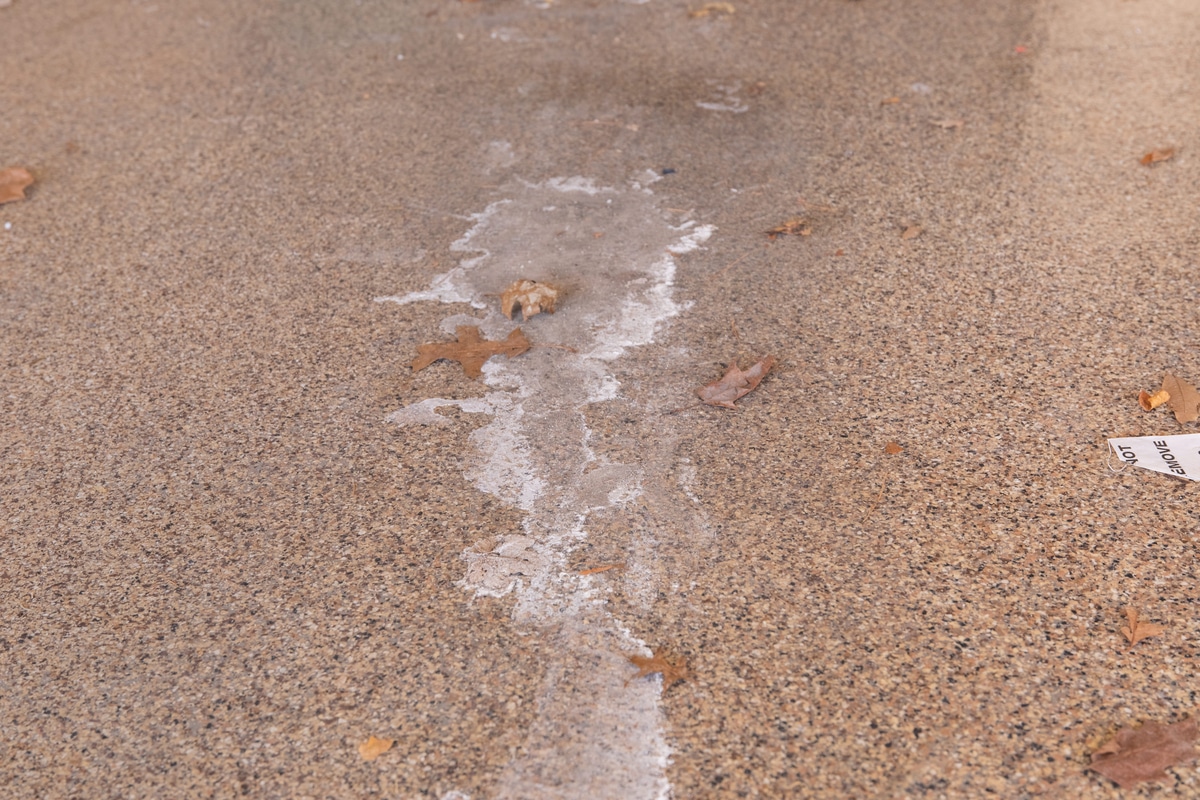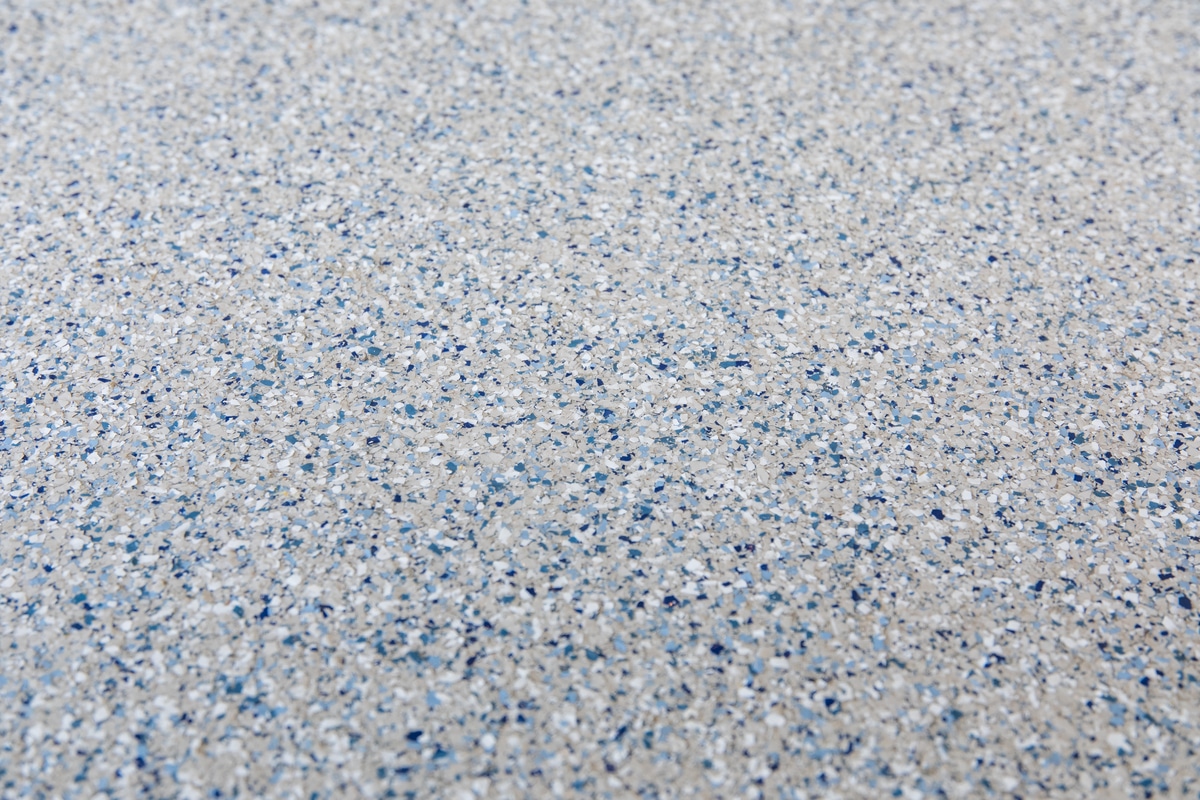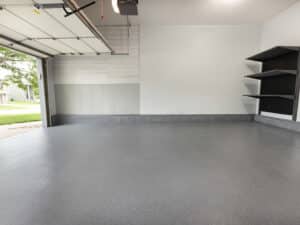If you’ve ever seen a garage floor with chunks of the surface peeled away, you’ve probably seen a phenomenon known as “hot tire pickup.” It can turn an otherwise beautiful new epoxy floor into a nasty, unsightly mess in a single hot summer. So, what is it, and how does it happen?


The name is relatively self-explanatory. When you drive your car, your tires are in constant contact with the road. This produces friction, which in turn produces heat. But in the summer months, on a hot day, that heat can reach upwards of 140 degrees Fahrenheit!
When your tires reach this temperature, it’s just hot enough to weaken the chemical bond the epoxy has with the surface of your garage. And since you pull into your garage in precisely the same spot every day, this repeated exposure to these high temperatures can cause that bond to break. And when that happens, the surface can peel away — literally “picked up” by your vehicle’s hot tires.
Polyaspartic: The Durable Garage Flooring Solution

Damaged epoxy garage floor with spots where hot tire pickup has removed the coating.
Our engineers and product development experts evaluated a ton of floor coating options when we first started, including epoxy, before we finally settled on polyaspartic technology. Polyaspartic floor coatings have been used in factories, airplane hangars and other industrial applications for decades, so we knew they’d be durable enough to withstand years of use and abuse in residential garages.
When it comes to garage flooring, though, polyaspartic floor coatings have another advantage. Because polyaspartic coatings literally become one with the concrete beneath them, they don’t simply lie on top of it like epoxy does. In fact, in laboratory stress tests, the concrete itself fails before the polyaspartic coating can be peeled from it. That means that daily exposure to your vehicle’s hot tires is less likely to cause it to break down and peel.
You can learn more about why polyaspartic floor coatings from Hello Garage are better than epoxy here.
Is There a Downside to Polyaspartic Floor Coating?
Short answer: No — there really isn’t a downside to choosing polyaspartic over epoxy for your garage floor coating. However, there are some factors to consider:

Garage floor refinished with a Hello Garage polyaspartic garage floor coating.
- Because they require rigorous surface preparation to adhere properly, polyaspartic garage floor coatings must be professionally installed.
- This requires the use of highly specialized industrial equipment and a great deal of expertise.
- Polyaspartic garage floor coatings can be more costly than epoxy coatings initially, but since you’ll likely have to reapply, an epoxy coating several times over the lifespan of a polyaspartic coating, it’s often less expensive in the long run to choose the polyaspartic option.
- And that doesn’t even consider the hassle of having to haul everything out of your garage and find a place to store it all while you’re reapplying your garage floor!
In the end, a professionally installed polyaspartic floor coating will likely far outlast an epoxy floor and be cheaper and less hassle in the long run. Get a free estimate today by calling us at 1.888.59.GARAGE.

